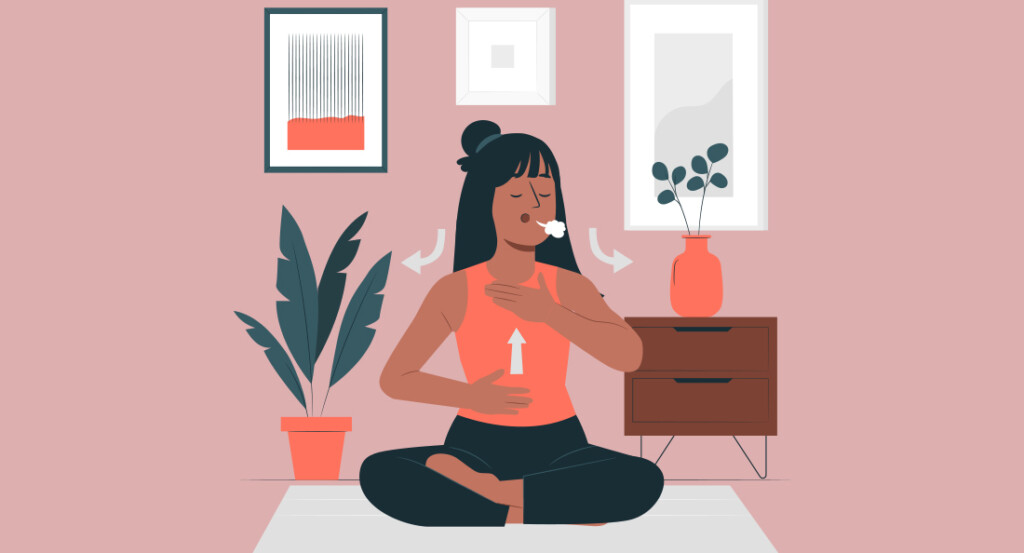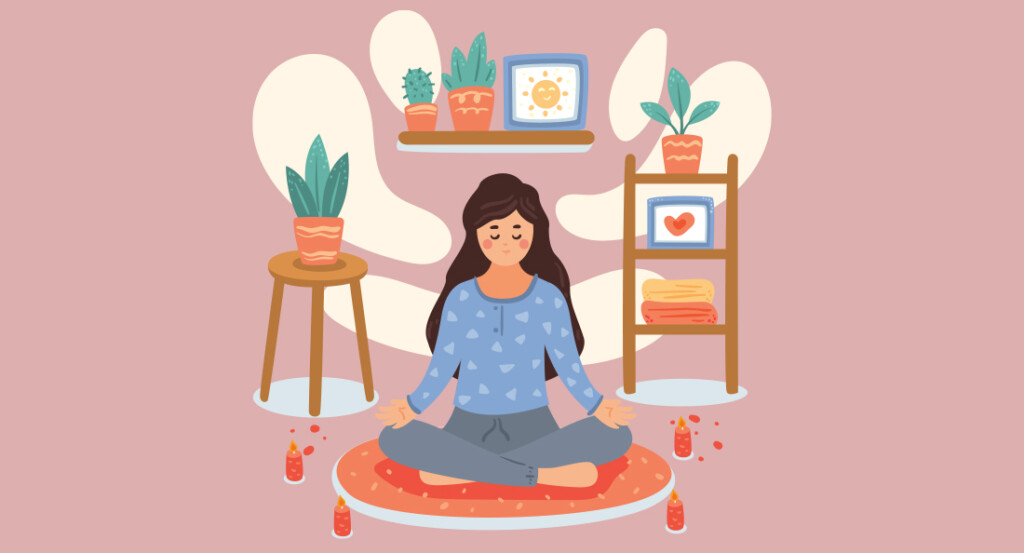Discovering Inner Peace: Tips for Quieting Inner Chattering and Finding Stillness Within
(Based on the live discourse of Param Dwij)
(परम द्विज के प्रवचन पर आधारित)

The worst place to dwell is unquestionably the mind, and the best place is the soul.
If we are alive, like we breathe, eat and do other essential works, there are always some thoughts that keep occupying our mind, which is like a constant companion. For most people, it is not a mental disorder such as schizophrenia. It is a natural occurrence in the human mind, which is called ‘thought chatter.’ To most of us, whether we are aware of it or not, it certainly affects how we feel and how we react to others, our work, our daily routine and, in fact, our overall well-being. But there are many who hold command over their mind and control and monitor it the way they want and channel it into a powerful energy that starts with understanding that our brain never stops thinking.
The mind has become a bustling hub of constantly clamouring thoughts in today’s fast-paced, chaotic world. The inner chatter is characterised by a relentless stream of thoughts, worries, and distractions, which is overwhelming and detrimental to mental well-being. It becomes essential to learn the method to have control over inner chattering and foster inner tranquillity to establish a greater inner peace, harmony, focus and emotional balance in our daily life and relationships.
Understanding Inner Dialogue

It is advised that before delving into bringing techniques into practice for quieting the mind, people should understand the nature of inner chatter. We need to understand a few fundamental things. Our mind is an asset that has taken millions of years of evolution to shape into the form we have today. We must clarify our approaches towards it. Stopping the chatter is almost impossible for human beings, as the inner dialogue is a normal function of the human mind. If you have a healthy mind, it will think about everything, but you need to be mindful of the thought traffic, whether it is regularly occupied by any set of thoughts. If it is so, it is a matter of alarm.

Just take in mind the beautiful balcony of your house. There is a set of flowers planted in a vase. Every morning, they bloom new flowers. What if you don’t remove those flowers from the balcony every evening? It will make it cluttered, shabby and dingy in appearance. And if you remove those withered flowers and dry leaves and clean them every morning, you will see your balcony will be the best place you would like to visit.
Try it. And, of course, think about it.
However, when this inner dialogue becomes incessant and intrusive, it can lead to a dire state of mind, which can bring stress, anxiety, and a sense of inner turmoil in return and make life struck as if you are amidst the traffic, cannot move anywhere due to being surrounded by toxic emotions and thoughts traffics.
Imagine it as real in two different pictures. First, you are in the traffic, and second, you are sitting in your office and watching the traffic and hearing the cars honking through the window of your house, located a few metres away from the road. Which one would you like to enjoy? Of course, the second one. And if honking makes vociferous to ears, you have an option: you can close the transparent glass window.
Here are some common characteristics of inner chatter:
Chattering Type-1 In this type, your mind constantly rushes from one thought to another without any final result – relentless, pointless and directionless.
Chattering Type-2 This type of chatter has three companions: worries about the future, regrets about the past, and general anxiety about life’s uncertainties.
Chattering Type-3 This type is self-critic, delving into the negative talk about self can dominate the inner dialogue, eroding self-esteem and self-confidence.
Chattering Type-4 This type easily gets distracted by outer influence or stimuli, which makes it hard to focus on specific tasks and drives the mind away from the present.

The Benefits of Quieting Inner Chatter
One thing that needs to be remembered is that people mistakenly take – by quieting inner chatter, they understand by silencing the mind, which is wrong. Quieting mind is a way to find a sense of inner harmony and peace.
There are some apparent benefits of cultivating inner stillness.
1. It reduces stress levels, leading to better physical and mental health.
2. Once the mind attains freedom from distraction and becomes quieter, people can enhance their mental dexterity to concentrate and become more productive.
3. Inner tranquillity leads to emotional well-being, greater emotional stability, a more optimistic viewpoint, and strengthening relationships.
4. After the mind becomes calm and clear and all the clouds of distractions get wiped away, decision-making becomes more effective and less impulsive.
There are some effective and practical techniques that can be crucial and helpful to quiet inner chatter and nurture inner tranquillity.

Ways to Silence Your Inner Thoughts
Tip-1. Mindfulness Meditation: Mindfulness meditation is a powerful practice that involves observing your thoughts without judgment by accepting your thoughts and letting them pass without attachment. It can gradually reduce the grip of inner chatter.
Tip-2. Deep Breathing Exercises: Breathing practice focusing on respiratory can anchor your attention in the present moment and calm the mind. Practice deep, rhythmic breathing to create a sense of inner peace.

Tip-3. Journaling: Jotting down your thoughts and worries in a journal daily can relieve stress, which can help you externalise your inner dialogue and provide clarity and perspective on your concerns.
Tip-4. Yoga: Practice Yoga, asanas, mudra, or other body awareness practices can help you connect body and mind, which can help quiet the inner chatter – particularly the practice of breath work and asanas. Physical movement can play a significant and effective role.
Tip-5. Practising Mindful Walking: Taking a mindful walk in nature, consciously observing the surroundings – hills, rivers, trees, and listening to birds chirruping can help massively – engage senses in the experience, such as feeling the ground beneath feet and listening to the sounds of nature.
Tip-6. Guided Imagery: Visualisation techniques using guided imagery to redirect thoughts toward positivity, internalising calming images and scenarios.

Tip 7: Limit the Amount of Stimuli: Over-indulgence in social media and listening to negative news often disturb the mind. So, it is better to reduce exposure to stimuli that trigger inner dialogue, such as excessive news consumption, social media, or engaging in multitasking simultaneously.
Tip-8. Allocate “Worry Time”: Designate a specific time each day to address your worries and concerns of the day, which lets you contain them rather than letting them consume your entire day.
Tip-9. Seek Professional Help: In this case, the inner dialogue reaches an irresistible and uncontrollable stage, severely affecting mental health. It is advisable to approach a mental health professional who can counsel with appropriate guidance and support to help people move out of the inner chattering trap.
Cultivating Inner Stillness Takes Time and Patience
Developing inner stillness requires consistent practice, like physical fitness, mental well-being, and spiritual soundness, which requires massive patience with self and accepting all the techniques in this process as a tool to seek peace within. Over time, it will establish a more serene and balanced inner landscape, leading to a happier and more fulfilling life.




